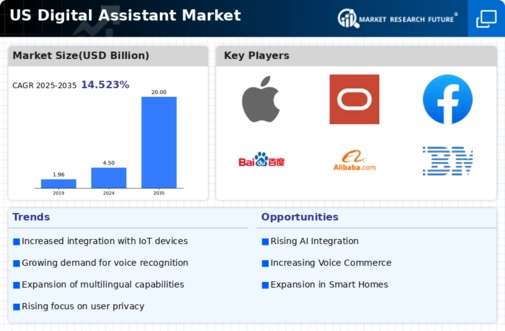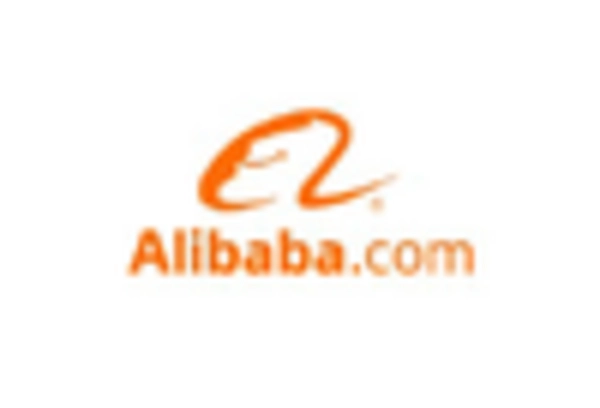Integration with IoT Devices
The digital assistant market is significantly influenced by the integration of Internet of Things (IoT) devices. As smart home ecosystems expand, digital assistants are increasingly becoming central hubs for controlling various IoT devices, such as thermostats, lights, and security systems. This integration not only enhances user experience but also drives the adoption of digital assistants in households. Recent statistics indicate that over 70% of smart home device owners utilize digital assistants to manage their devices. This trend suggests that as more consumers invest in IoT technology, the digital assistant market will likely see accelerated growth, with companies focusing on interoperability and seamless connectivity among devices.
Expansion of Multi-Platform Accessibility
The digital assistant market is experiencing an expansion of multi-platform accessibility, allowing users to interact with their digital assistants across various devices and platforms. This trend is driven by the need for seamless user experiences, as consumers expect to access their digital assistants on smartphones, smart speakers, wearables, and more. Recent data indicates that over 60% of users prefer digital assistants that can operate across multiple devices. This growing demand is prompting companies to enhance their digital assistant offerings, ensuring compatibility and synchronization across platforms. As a result, the digital assistant market is likely to see increased competition as firms strive to provide comprehensive and cohesive user experiences.
Advancements in Natural Language Processing
The digital assistant market is being propelled by advancements in natural language processing (NLP) technologies. These innovations enable digital assistants to understand and respond to user queries more accurately and contextually. As NLP capabilities improve, users are likely to experience more intuitive interactions with their digital assistants, leading to increased satisfaction and engagement. Recent studies indicate that enhanced NLP features can boost user retention rates by up to 30%. This suggests that companies within the digital assistant market are prioritizing investments in NLP research and development to stay competitive and meet evolving consumer expectations.
Rising Demand for Voice-Activated Technology
The digital assistant market is experiencing a notable surge in demand for voice-activated technology. As consumers increasingly seek hands-free solutions for everyday tasks, the integration of voice recognition capabilities into various devices has become paramount. According to recent data, the market for voice-activated devices is projected to grow at a CAGR of approximately 20% through 2026. This trend is driven by the convenience and efficiency that voice assistants provide, allowing users to control smart home devices, access information, and manage schedules seamlessly. Consequently, manufacturers are investing heavily in enhancing voice recognition accuracy and expanding the functionalities of digital assistants, thereby propelling growth within the digital assistant market.
Growing Interest in Health and Wellness Applications
The digital assistant market is witnessing a growing interest in health and wellness applications. Consumers are increasingly turning to digital assistants for health-related tasks, such as tracking fitness goals, managing medication schedules, and providing personalized health advice. This trend is reflected in the rising number of health-focused applications integrated with digital assistants, which cater to the needs of health-conscious individuals. Market data suggests that the health and wellness segment is expected to account for approximately 15% of the overall digital assistant market by 2027. As a result, companies are likely to invest in developing features that enhance the health and wellness capabilities of their digital assistants, thereby expanding their reach within the digital assistant market.

















Leave a Comment